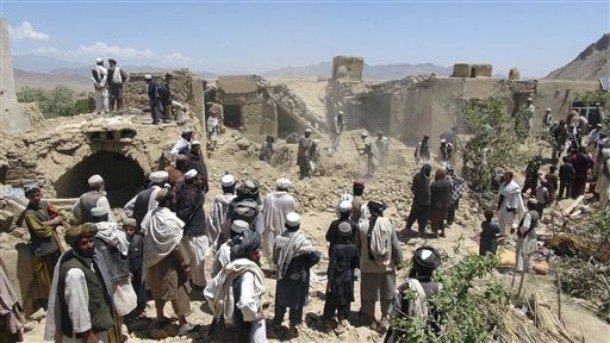Conditions in South Asia are chaotic, confused, critical and potentially catastrophic. Afghanistan, India and Pakistan are confronted with existential security, economic and political dangers that could overwhelm the capacity and limited resources of each state to address.
In a surprisingly chilling parallel, the prospect of a South Asian disintegration can be likened to the global financial meltdown of 2008 and the collapse of iconic institutions such as Lehman Brothers along with the rescue of others, such as the insurance giant AIG, deemed too big to fail.
Three decades in coming, this financial debacle was predictable a year or two in advance by prescient observers and resulted from tragically flawed assumptions and ignorant decisions. The financial weapons of mass destruction for this implosion were the subprime mortgage market; collateralized debt obligations; and credit default swaps.
In a series of stupendously disastrous bipartisan blunders by a succession of White Houses, congresses, Republicans and Democrats, the dream of home ownership became the deus ex machina for obliterating the global financial system. By removing the separation between commercial and investment banks that had been in place since the Great Depression of 1929 to prevent the latter from speculating with the former’s saving accounts and legalizing CDS that were banned in 1908 and were in essence bets made on the price of stocks without having to own them, by 2000, the explosive ingredients were in place for this catastrophe.
Mortgages made to millions who couldn’t afford them led to a massive proliferation of financial instruments that were packaged and sold as securitized loans to institutions and investors who naively believed the housing market would never contract.
Inconceivably, because of huge commissions, little oversight or due diligence was applied to making these loans. As bad, Wall Street saw the subprime market as a perpetual money making machine. But, by September 2008, global markets would melt down.
Today, Afghanistan is the geostrategic equivalent of the subprime mortgage. The war on terror and the destruction of al-Qaida poured hundreds, if not trillions, of dollars into Afghanistan. As the financial system depended on subprime mortgage holders’ capacity to pay their loans, success in Afghanistan is entirely dependent on Afghans assuming responsibility for their own security and on the government in Kabul being capable of extending governance throughout the country. And what happens in Afghanistan will profoundly affect its immediate neighbors Pakistan and India.
Pakistan could be cast in the role of Lehman Brothers, one of the world’s greatest investment banks whose bankruptcy would become the largest in history with debt totaling about $660 billion. The U.S. government chose not to bail Lehman out. One of the reasons was the size of its debt and the some 50 to 1 leverage of its assets that simply couldn’t be repaid by any intervention. The second was the unbridgeable personality differences between Lehman Chairman Richard S. Fuld and Secretary of the Treasury and former head of rival Goldman Sachs Henry M. Paulson who thought Fuld was incompetent, asleep or both.
Lehman foolishly bet its future on massive ill-advised real estate acquisitions and gross over extensions in the CDO and CDS markets. These became ticking time bombs.
Pakistan faces a vastly different but equally dangerous set of time bombs.
The economy is fragile. Eighty million of its citizens are 21 or younger with little education, no jobs, no prospects and are migrating to cities where radicalization is in full bloom. Despite sufficient electrical generating capacity to meet national demand, the inability to pay for power has induced cuts of 20-plus hours each day. And the insurgencies and war in Afghanistan have claimed more than 40,000 Pakistani lives.
Meanwhile, profound cultural and national security differences have turned Pakistan into a pariah state as viewed from Washington. Hence, U.S. military and economic aid has dried up in the wake of an allied attack resulting in the deaths of Pakistani soldiers in November and the supply route to Afghanistan from Karachi remains shut. In essence, Pakistan could become the geostrategic equivalent of Lehman.
India fits the role of AIG. Because of its size, strategic location and growing economy, as far as the United States is concerned, as with AIG, India is too big to fail. And America will react accordingly.
Parallels aside, Pakistan is too important to be left to implode.
Three actions can defuse these time bombs: First, Pakistan needs another 100,000 policemen. Second, relief of textile tariffs can help restart its economy. And a full-court press to resolve the stalled Indo-Pakistani conflict is critical to both states. But this requires international leadership.
South Asia cannot be allowed to disintegrate as the financial system did in 2008. Whether the international community understands this potential for meltdown or not, will it respond? The answer is almost certainly no.
Harlan Ullman is Senior Advisor at the Atlantic Council, Chairman of the Killowen Group that advises leaders of government and business, and a frequent advisor to NATO. This article was syndicated by UPI.
Image: afghanistan%20raid.jpg
